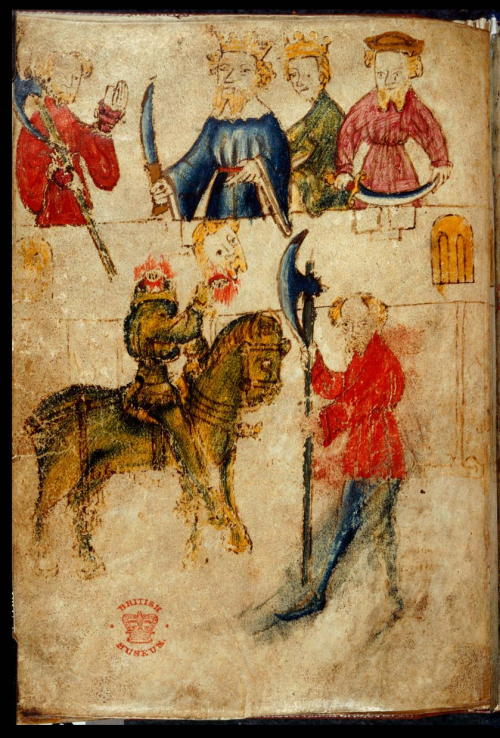As I spend time thinking about language and its imperfections, how it only reveals slivers of truths, not a whole truth, I discover how easily we deceive ourselves into believing we could possibly ever know something wholly. Take self-identity for an example. We define ourselves by our jobs, at least in the U.S., in such a way that we think doing the work of a doctor, a teacher, a chef is who we are, that we reduce ourselves to that activity, and we are nothing but that. Maybe it’s not a job that we define ourselves by, but our attitudes toward politics or maybe it’s our material possessions.
John O’Donohue calls this a prison of identity (Eternal Echoes pp. 145-149). He says we cling to safe images of the self that we’ve learned help us in some way, whether through “attention or approval.” It’s a way of survival. This self image, he says, “becomes the desperate focus of our longing” (147). I’ve precisely lived this way, unaware even of what the image of myself might be, but nevertheless I clung to it with oblivious longing. A blurred portrait of submission that had details painted in here and there, smudges of watercolors. And as soon as those details are threatened from the outside, from someone else, I lash out like an angry tiger. I have framed in my identity.
Images need light in order for us to see them; we can’t see images in the dark. O’Donohue suggests we perceive ourselves through symbols rather than images. Symbols “are never completely in the light. It holds a vital line into the rootage in the dark. It has many faces.” Similarly, Carl Jung, I believe, said that symbols are alive while signs are fixed. Symbols always mean more than one thing, often contradictory things. And just as I can only see the side of this mug on my desk, a cat’s face protruding from the ceramic hollow, I have to trust it has another side (see Maurice Merleau-Ponty’s Phenomenology of Perception). Just as a symbol “holds a vital line into the rootage in the dark” such that its meanings are essentially bottomless, so too can this mug only show the part of itself that is directly in my line of sight.
When I moved out of Wolf Hollow, my house in Asheville, I had to let go the image of self as woman who heated only with a wood stove. I saw myself as the independent woman warmed three times by the wood: stacking, splitting, burning. Once I moved, that image no longer defined who I was and I suddenly felt blank. I lacked an image; I had no idea who I was. If I had understood myself as a symbol, I wouldn’t have felt so adrift.

Symbols reach deeply and widely while our self-images are thresholds, only surfaces of the self. They are the outward trappings the poet of Sir Gawain and the Green Knight focuses on so minutely, for lines and lines he describes the surfaces of things, the armor, the ax, the sword, the pentangle, the image of Mary on his shield, the shield, women’s clothes, the adornments at the feasts. All these surfaces that cover, things that fasten one to another. A thong fastened to an ax, the girdle fastened around the waist. All these things keep self contained, orderly, neat. “Intelligible,” Carolyn Dinshaw calls it in “Heterosexuality and Its Consolations in Sir Gawain.”
The image consoles; follow the code of knights, endeavor to present the image of perfect chivalry. Are you Gawain if you don’t kiss me? Isn’t a knight to show respect to a lady? Who IS Gawain? Is he the knight who kisses his lord’s wife? Or is he the man who disrespects his hostess? The code of chivalry contains him. The image of a complacent, contributing civilian has contained me. The image of a woman living a little on the edge has contained me; it never let me run wild.
When I say, I am a witch, do I mean the image of a witch or the symbol of one? Out of fear, we console ourselves with intelligibility. With fastenings, we hold things together. But the Green Knight explodes all that when he speaks from a head removed—unfastened—from its proper place. The Green Knight cannot be contained by chivalric code. Yes, he wears the appropriate clothes to placate, he holds a sprig of holly to show peace (what a symbol). He follows protocol. But to be beheaded and continue to live? This defies all intelligibility, all safe images of chivalric knights following the code: he is the symbol of the knight, not the image of one.

Self-images keep our blood from pulsing; we stagnate. Images are the Three of Cups Reversed: we cut ourselves off from others, our celebrations are mere theater. We buy kitschy crystals and charm sachets from new age shops to “do magic” but fail to drudge through dull mundanity of actual change. We can’t truly be ourselves with others when we can’t be ourselves with ourselves. Our lives are so much deeper and broader than the images we fix ourselves to. We are symbols for that which is everything that is revealed in light and hidden deep in the roots of shadows. And language is only one part of it.
